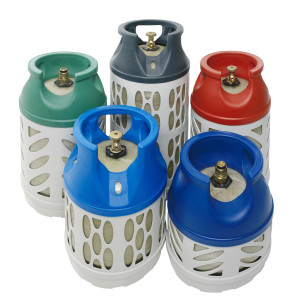For several years now, a new category of materials featuring extraordinary characteristics has jumped to the forefront. They are composites, consisting of a matrix and a series of reinforcements embedded into it. The two components, chemically distinct and insoluble each other, are so mechanically bound to form a single structure. Reinforcements, with excellent mechanical characteristics, have the function of bearing stresses, providing the necessary strength, while the matrix keeps the same reinforcements in position, protects them, distributes stresses (essential function) and prevents compression deformations.
Composite materials can be of different types, depending on the matrix used, on the type and sizes of reinforcements. The latter can be constituted by particles (powders, grains or whiskers), by short or long fibres, often bound to form a fabric. The discovery of the impressive characteristics of the latter has led to the development of composite materials in mechanical field and has induced companies and research institutes to study and to develop fibres provided with more and more advantageous properties.
Some remarks are necessary before examining the situation in detail. First of all, it is not true that the tensile strength of fibres is higher than steel’s. The latter, if in the form of extremely thin wires, can exceed 3500 MPa, an analogue value to aramid fibres’ and higher than carbon fibres’. The best alloyed steels, in the shapes commonly used in mechanical ambit, that is to say in bars, sheets etc… do not generally overcome 1400 MPa and special ones (like maraging) reach about 2000. It is not surprising. We have just to consider the mechanical properties of the “massive” glass, when it is not in the fibre form, and the ones that it features when produced with processes that determine the formation of subtle yarns.
The materials that we are treating have very low density: we range from about 2.5 kg/dm3 for glass fibres to something like 1.75-2.10 kg/dm3 for carbon ones. Aramid fibres even reach a record value, slightly inferior to 1.50 kg/dm3. The fibre diameter is very important for the tensile strength. To have an idea of how much the latter can vary, just consider that if, with a determinate type of carbon fibre, the diameter decreases from 12 microns to 7 microns, the strength rises by over 80%.
Concerning the characteristics of the various fibres, available by consulting various sources, not infrequently data are quite discordant. The references to some of them, for instance, are quite generic. When we talk about aramid fibres, what do we mean exactly? The most famous is kevlar (name registered by DuPont), but in that case is it 29, 49 or still another? There are several types of carbon fibres and, besides, their specifications can vary even a lot, depending on the “precursor” used to produce them. Moreover, in the light of what above said, it would be necessary to know what diameter have the fibres at stake. Therefore, the data concerning the various fibres and referring to the tensile strength reported on different texts, should not be considered as rigorous numeric values but as useful reference. Averaging the values reported by different sources, the tensile strength of the E-glass fibre (cheaper and more diffused) is in the order of 3400 MPa, that of the S-glass fibre is even exceptional, with around 4400 MPa. Aramid fibres approach 3600 MPa (Kevlar 49). Carbon fibres reach lower values: high-module ones (HM) feature 2300 MPa approximately, while high-strength ones achieve around 2800-3000 MPa. It is worth reminding here that, as already said, what more matters, at least for the vast majority of applications, is the tensile strength to density ratio. And then, in the comparison with metal materials, issues change …
An essential characteristic is the module of elasticity and here the discrepancies among different sources are
generally modest. Concerning E-glass fibres, the module is in the order of 70 GPa (like aluminium alloys) and for S-fibres we rise to about 85 GPa. Aramid fibres approach 125-130 GPa while HT carbon fibres feature about 220 GPa (more or less like steel) and HM even 380-400, value that is exceeded by the VHM version of these fibres. Another important property, which notably shares in describing the behaviour of the material under stress, is the percentage elongation; in this case, it is always very modest. In other words, our fibres are not ductile materials. Aramids reach about 2.5%, but for HT carbon fibres we speak of 1.4% and even of 0.6% only for HM.
It is important to bear in mind that the characteristics of composite materials do not certainly correspond to those of the fibres used to make them! We are dealing in fact with the results of the two contributions respectively provided by reinforcements and matrix.



